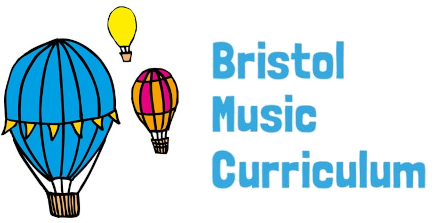Key Learning Objectives: To sing with confidence and control as an individual and in a group. To sing in parts. To understand the significance of folk songs and oral tradition and explain this with reference to known songs. Starter activity: Class vocal warmup using the track, ‘Warmup and Stomp Canon’, explaining to the children that singers […]
Category: Year 4
Year 4, Unit 4: Songs of the City – Lesson 5
Key Learning Objectives To perform a sequence of movements to a song. To maintain a steady pulse. To clap the rhythm of the song. To trace the pitch of a melody. Starter activity: Class vocal warmup using the track, ‘Plasticine person’, engaging with different vocal sounds and exercises for the vocal muscles. Main activity: Learn the traditional […]
Year 4, Unit 4: Songs of the City – Lesson 3 & 4
Key Learning Objectives To add tuned and untuned percussion parts to accompany the medley of traditional songs already learnt. Starter activity: The whole class to clap to the heartbeat and engage with the Vocal warm ups (1 1,2,1) – found on SingUp. Main activity: Revisit the four Pentatonic Partner songs, adding instruments to accompany the […]
Year 4, Unit 4: Songs of the City – Lesson 1 & 2
Key Learning Objectives: To sing a song in unison using actions. To maintain a part when singing two or more songs. To explain what a traditional song is and to be able to say where a song originates from. To describe how several songs when sung together can create different textures Starter activity: Class vocal […]
Year 4, Unit 3: Chronology – Lesson 6
Key Learning Objectives: To explore minimalism through a variety of media, manipulating sounds and media. To compose / notate / perform a minimalist composition. Starter activity: Listening and response exercise, based on the work ‘Changes’ by the contemporary Bristol composer John Pitts. Create a shifting pattern of actions, choosing five actions, repeating them until a good […]
Year 4, Unit 3: Chronology – Lesson 5
Key Learning Objectives: To respond to a piece of music with creative writing. To recognise changes in dynamics within a piece of music. To identify how a composer can orchestrate a simple theme in a variety of ways to create varying effects Listening focus: Listening and response exercise, based on the work ‘Firebird’ by the Russian […]
Year 4, Unit 3: Chronology – Lesson 4
Key Learning Objectives: To respond creatively to a piece of music. To suggest words to describe the mood of a piece of music, considering how the composer may have wanted the listener to feel. To identify instruments and to consider how their timbre suggests tone colours. Listening focus: Listening and response exercise, based on the […]
Year 4, Unit 3: Chronology – Lesson 3
Key Learning Objectives: To follow a graphic score To know that staccato means detached. To recognise repeated rhythmic patterns. To compose and perform melodic phrases. Listening focus: Listening and response exercise, based on the work ‘Fossils’ by Camille Saint-Saëns, the twelfth movement of the musical suite ‘Carnival of the Animals’. Main activity: Focus on the rhythm of the main theme, noticing […]
Year 4, Unit 3: Chronology – Lesson 2
Key Learning Objectives: To listen to a piece of music and to consider and share emotional responses. To begin to understand independent part writing and layering of musical parts. To recognise music sung a capella (unaccompanied voices) Listening focus: Listening and response exercise, based on the work ‘Crucifixus’ by Antonio Lotti, an introduction to Baroque choral […]
Year 4, Unit 3: Chronology – Lesson 1
Key Learning Objectives: To learn about Renaissance instruments and to identify the differences and similarities to instruments today. To understand a piece of music is often written for a purpose and consider where it may have been performed. To listen carefully to a piece of music and use drama to respond creatively to it. […]
